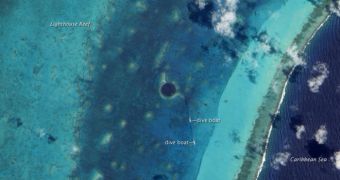Underwater caves may hold the answer to one of the most important questions in the world – how did life evolve? A particular set of such caves, located in the Bahamas, may be especially suited to answer this question, investigators explain.
In addition to revealing the intricate history our planet has, investigating these locations could also shed more light on the likelihood of intelligent or primitive life developing on extrasolar planets that have the same conditions as the primitive Earth.
The particular types of underwater caves researchers are analyzing in the Bahamas are called blue holes, since they appear as circles when seen from airplanes. They display various shades of blue, and the Bahamas Archipelago displays the largest concentration of such structures in the world.
This makes the islands a heaven for investigators seeking to gain additional insights into the origins of life on Earth, Space reports. Microbes and other microorganisms are the primary target for research.
“It's really incredible to be swimming down a passage that no one has ever been in before, to experience that thrill of discovery. At the bottom of a cave, there's no telling what might be around the next corner,” Tom Iliffe explains.
The expert, a researcher with the study team, holds an appointment as a marine biologist at the Texas A&M University in Galveston. During the new investigation, he and his group were able to investigate three inland blue holes, discovering significant differences in biodiversity between each of them.
“We're finding new forms of life that are totally unknown elsewhere on Earth,” the investigator says, quoted by Space.
Inside each blue hole, water separates itself into various layers. Some of them are rich in oxygen, whereas others lack it completely; some are freshwater layers, whereas others are very salty. Each of these layers features unique combinations of lifeforms, each adapted to that particular environment.
These natural laboratories basically supply researchers with virtually-endless array simulations of the conditions that may have led to the emergence of life on Earth. Each of these “brews” is somewhat different from any other.
“These bacterial forms of life may be similar to microbes that existed on early Earth and thus provide a glimpse of how life evolved on this planet. These caves are natural laboratories where we can study life existing under conditions analogous to what was present many millions of years ago,” Iliffe concludes.

 14 DAY TRIAL //
14 DAY TRIAL //